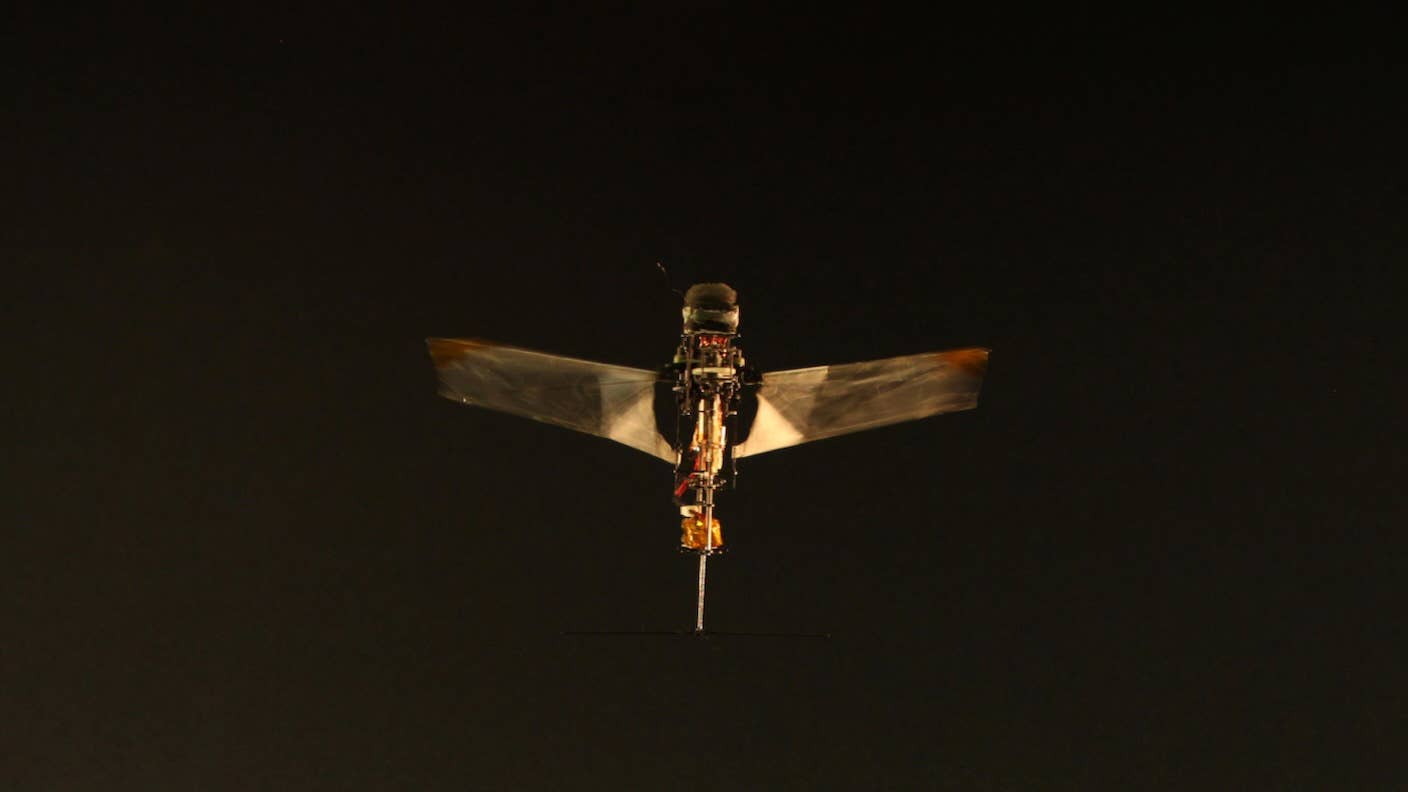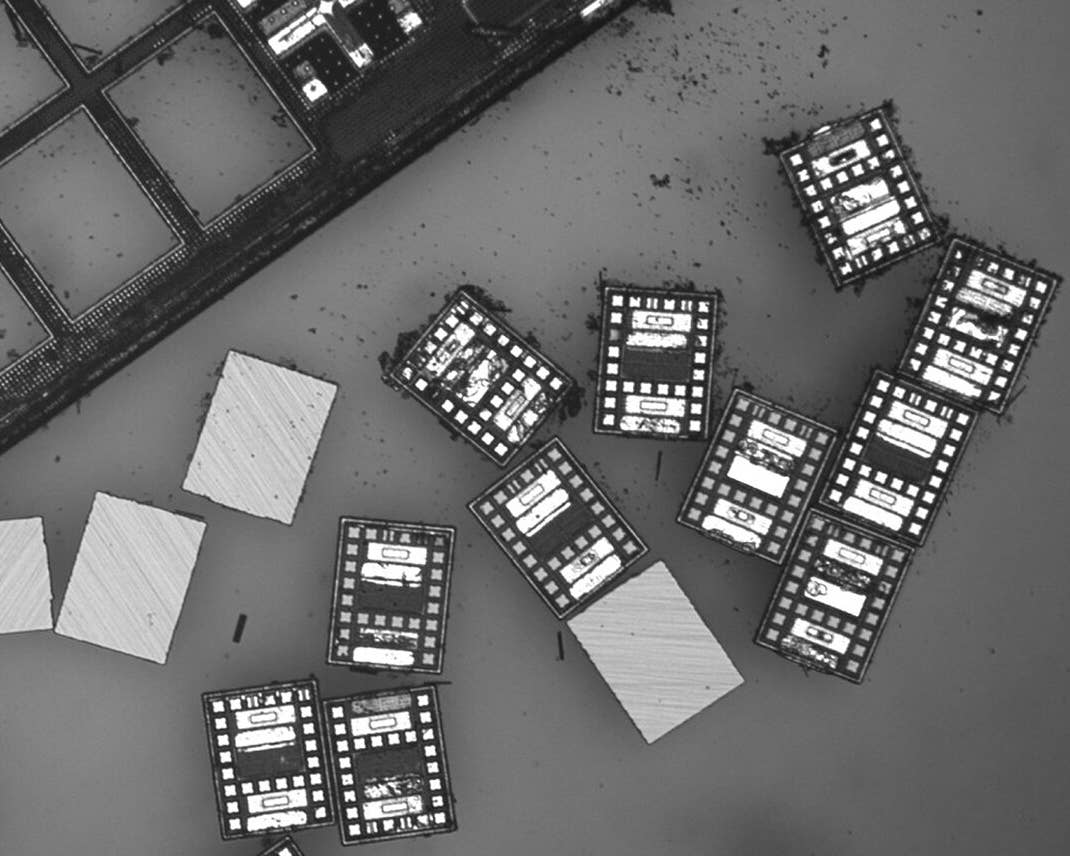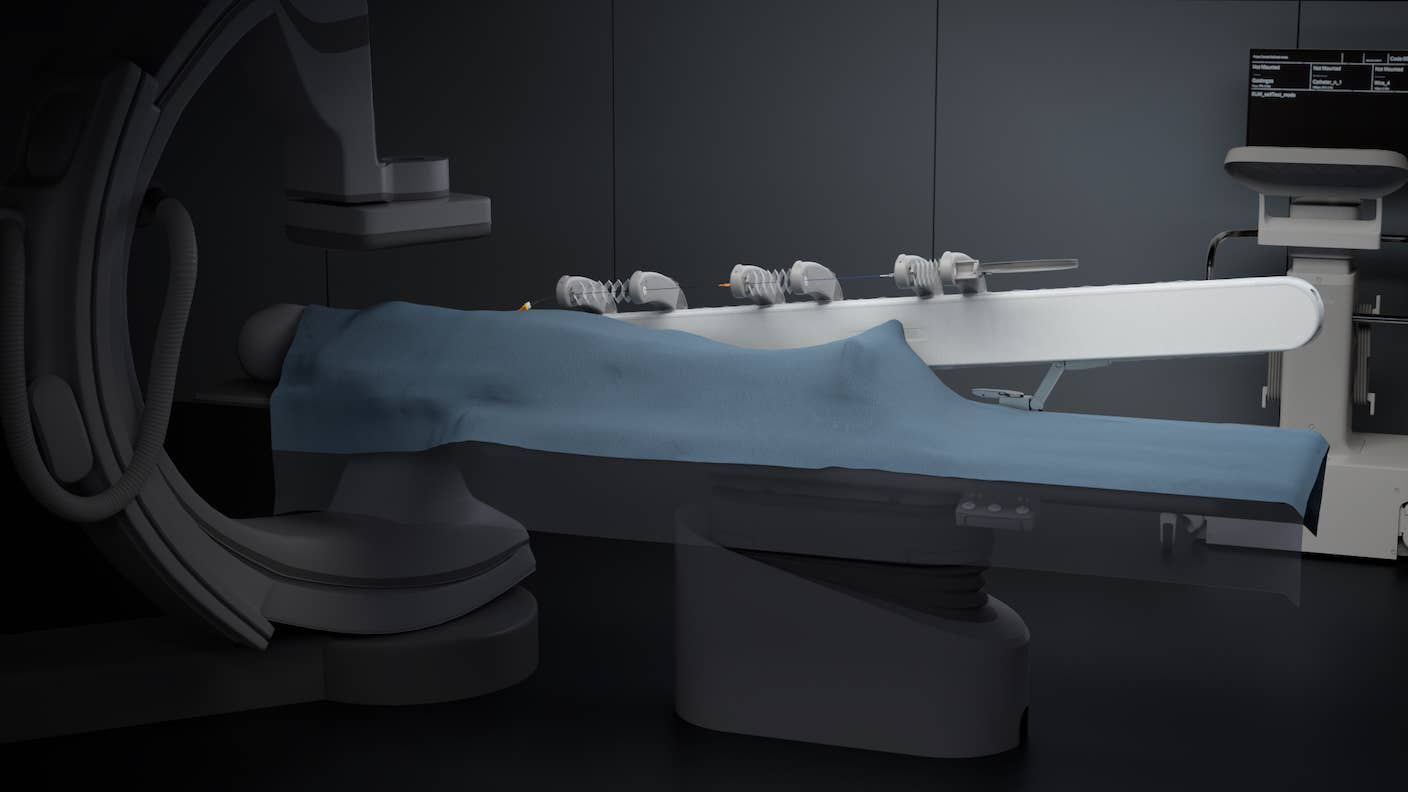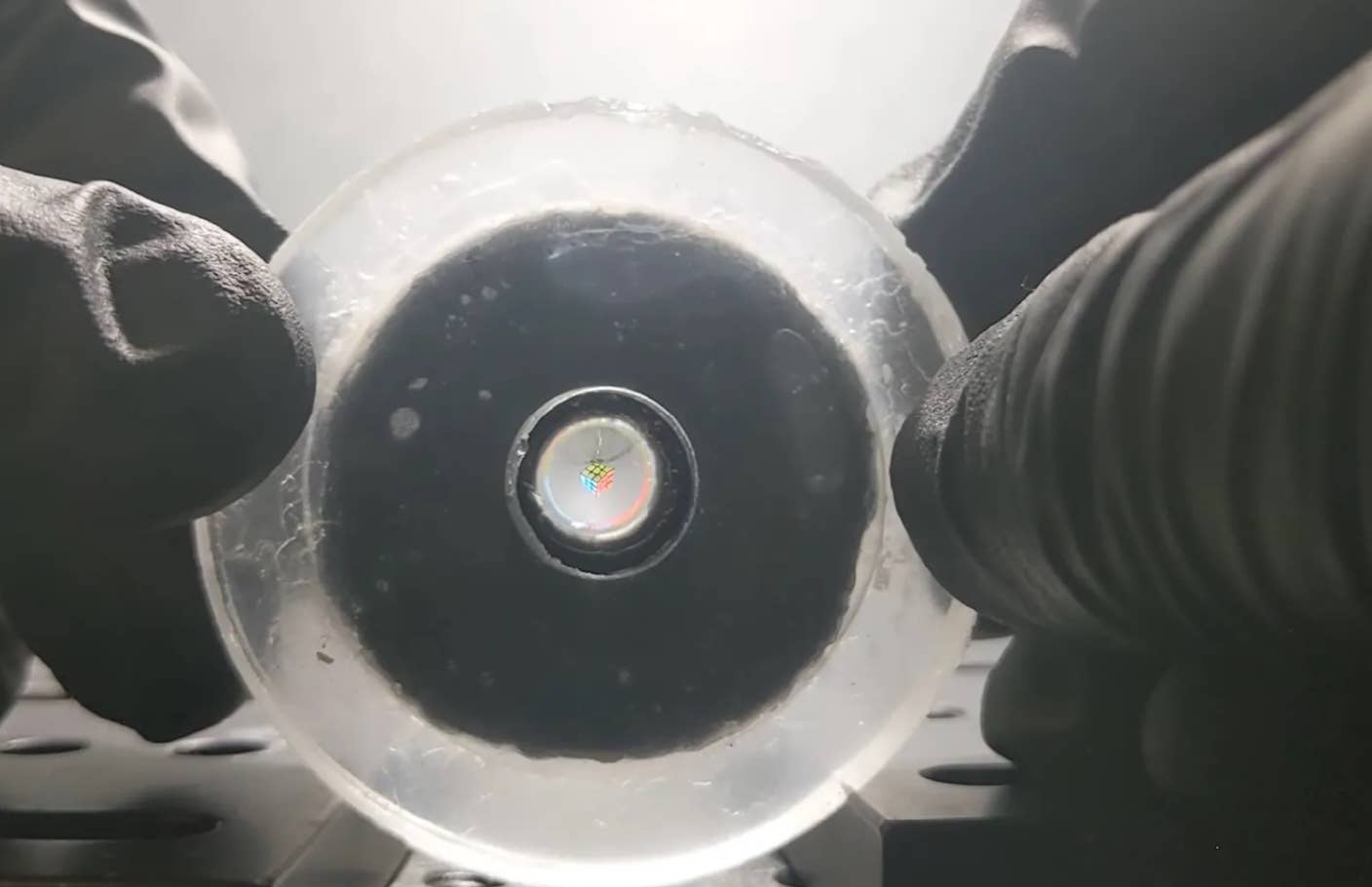A Massively Strong Beetle Just Inspired a Lightweight Flying Robot

Share
One of the largest and strongest beetles in the world hardly seems the best inspiration for a delicate flying microbot.
But using slow-motion cameras to capture the critters in flight, an international team designed a flying micromachine that can similarly expand and retract its wings. The robot—resembling a rocket before takeoff and a flying insect once airborne—deploys its wings for takeoff, then easily hovers and flaps them to stay aloft. Upon landing, it tucks its wings back into its body.
The robot was inspired by rhinoceros beetles, named for the distinctive horns protruding from the males’ foreheads. These critters can grow up to six inches—picture a similarly sized Subway sandwich—and carry up to 100 times their body weight in cargo, earning them the nickname Hercules beetles.
They’re hardly stationary beefcakes. Covered in a shiny black or grey exoskeleton, these beetles can fly two miles a day. But it was their sophisticated wing-deployment system that caught the eyes of roboticists.
“Birds, bats, and many insects can tuck their wings against their bodies when at rest and deploy them to power flight,” but we didn’t know how the process worked for the beetle, wrote the authors.
It’s not just scientific curiosity. The research could lead to flapping robot designs for search and rescue operations or environmental, agricultural, and military monitoring.
The findings could improve the design of flapping-wing robots, especially smaller ones with limited takeoff weights, explained the team, “enabling them to deploy and retract their wings similarly to their biological counterparts.”
Nuisance to Notion
When it comes to fashioning mini-bots, Mother Nature is a mother lode of creative inspiration.
In 1989, a pair of intrepid scientists at MIT’s Artificial Intelligence Lab imagined and built several small, multi-legged robots to explore our planet and the solar system beyond.
Fast forward to earlier this year, and the idea is becoming reality. One team developed a crawling MiniBug robot and artificial water strider by mimicking movements observed in their natural counterparts. These were some of the smallest, lightest, and fastest fully functional robots to date, relying on tiny motors—called actuators—to help them move.
Meanwhile, bees have inspired microbots that fly, even with damaged wings, and flies have inspired tiny accelerometers that sense wind and aid flight control. Dr. Sawyer Buckminster Fuller at the University of Washington, an author of the latter study, explained at the time why bugbots makes sense. “First, they're so small that they're inherently safe around people. You won't get an injury if an insect robot crashes into you. The other is, they're so small they use very little power."
Yet these systems still require electricity or motors to control wing positions during takeoff, flight, and landing, which limits their range and utility. The new study looked to beetles for an alternative—one that doesn’t require motors to stretch and tuck a bugbot’s wings.
Beetle Juice
The rhinoceros beetle was a risky inspiration. With two pairs of wings—each having its own set of mechanics and uses—the beetle has always been hard to study.
“Beetles…possess one of the most complex mechanisms among the various insect species,” wrote the authors.
Part of this is due to a complex dynamic between the pairs of wings. The forewings, also called elytra, are hardened and shell-like. The hindwings, in contrast, are delicate, membrane-like structures—think of a dragonfly’s wings—that fold into themselves like origami.
This “allows them to neatly stow between the body and the elytra” when not in flight, wrote the team.
The shell-like elytra protect their hindwing teammates at rest and spread like fighter-jet wings during flight. The hindwings unfold and flap during flight, then fold back upon landing. Previous studies suggested that muscles, stretchy tissues, or other elements drive the hindwings. Here, the team laid the debate to rest using high-speed cameras to record beetles as they took flight.
Wing Man
The beetle’s wings spread in two steps.
First, like a fighter jet, the beetle deploys the hard-shell elytra. Through a spring-like mechanism, the hindwings then slightly stretch out using stored energy rather than muscle energy. In other words, the beetle doesn’t flex its muscles—its hindwings naturally spread.
“This allows the clearance needed for the subsequent flapping motion,” wrote the team.
Be Part of the Future
Sign up to receive top stories about groundbreaking technologies and visionary thinkers from SingularityHub.


The second phase activates synchronized flaps of both wing pairs. The hindwings unfold and assume flight position, allowing the beetle to maneuver through nooks and crannies.
The duo also work in concert for landing. The elytra push the hindwings to fold and neatly tuck into a resting position—with the elytra’s hard shell protecting them from above.
Flapping Flying Bots
The team designed a flapping robot that mimics the beetles’ wing system.
It looks like a cyborg fly, with two translucent wings connected to a golden body and rotund head. Unlike the beetle, the bugbot has just one pair of retractable wings that fold into itself at rest, decreasing its length by over 60 percent.
Each wing is made of light-weight carbon and a stretchy membrane. Combined with flexible joints, the bugbot easily rotates as it flaps around. An elastic tendon at the bot’s “armpits” can pull the wings back in just 100 milliseconds—or about the blink of an eye. The team used a single motor, based on the elytra, to deploy them.
Once activated, the wings rapidly spread, propelling the minibot skyward in two wing flaps. In a series of tests, the bot successfully took off, hovered, and landed. The wings automatically unfolded into the flight position, generating enough lift for takeoff. While airborne, it hovered and stayed upright, despite some wobbles. On landing, the bugbot refolded in on itself, retracting its wings in the blink of an eye.
These retractable wings have an additional perk—resilience.
If the bugbot is hit by an obstacle, causing it to irreversibly tumble and potentially crash, it immediately retracts its wings to protect them from impact—without the need for muscle energy or other external controls. This resilience may come in handy when navigating dangerous terrain—after an environmental disaster, for example.
Although the study focused on the rhinoceros beetle, a similar strategy could be used to observe and harness biological perks from other insects, such as ladybugs.
“These experiments…[demonstrate] a new design principle for the robust flight of flapping-wing microrobots with stringent weight constraints in cluttered and confined spaces,” wrote the team.
Image Credit: Hoang-Vu Phan
Dr. Shelly Xuelai Fan is a neuroscientist-turned-science-writer. She's fascinated with research about the brain, AI, longevity, biotech, and especially their intersection. As a digital nomad, she enjoys exploring new cultures, local foods, and the great outdoors.
Related Articles

These Robots Are the Size of Single Cells and Cost Just a Penny Apiece

In Wild Experiment, Surgeon Uses Robot to Remove Blood Clot in Brain 4,000 Miles Away

A Squishy New Robotic ‘Eye’ Automatically Focuses Like Our Own
What we’re reading